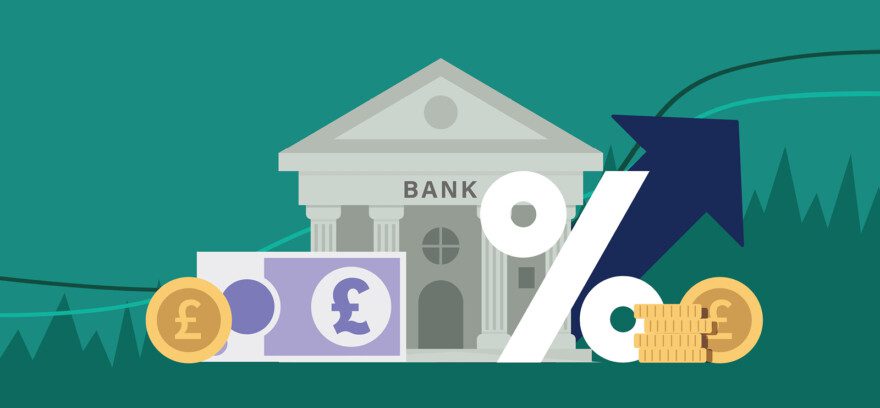UK markets rose this week, with the FTSE 100 Index gaining 0.3% to trade at 8,270 points at the time of writing.
The annual increase in consumer price inflation in the UK came in at 2.2% in August, unchanged from July’s rate and matching the expectations of economists polled by Reuters. Although inflation remains above the Bank of England’s 2% target, it signals growing confidence that prices are coming under control, leaving the door open for a further interest rate cut this year.
The Bank of England held interest rates at 5% at its latest meeting on Thursday after the inflation figures, but it indicated that it may lower borrowing costs again as soon as November. The Monetary Policy Committee voted eight to one in leaving rates unchanged after cutting borrowing costs by 0.25% at its meeting last month. The Bank of England said it will take a “gradual” approach to loosening policy, assuming that there are no material changes in the economy.
UK retail sales rose by 1% month on month in August 2024, following an upwardly revised 0.7% rise in July and well above forecasts of 0.4%. Some supermarkets and clothing retailers reported a boost due to warmer weather and end of season sales.
Sales increased by 1.8% in food stores and those at non-food increased by 0.6%, while the amount spent online remained flat. Elsewhere, UK government borrowing sharply overshot expectations in August, with the public sector borrowing £13.7 billion, pushing public debt to 100% of GDP, according to the Office for National Statistics. The debt to GDP ratio increased by 4.3% over the same time last year, delivering a blow to chancellor Rachel Reeves as she prepares for her first budget next month.
Commodity markets
In the commodity markets, Brent crude futures traded around $75 per barrel on Friday and are set for a weekly rise, after the Federal Reserve cut interest rates for the first time in more than four years and as tensions in the Middle East continued to escalate.
Crude futures have rebounded strongly as tensions soar between Israel and the Iranian-backed militia group Hezbollah in Lebanon. Prices are also finding support after US oil stockpiles fell by 1.6 million barrels last week. Pagers and walkie-talkies used by Hezbollah exploded this week, killing dozens and wounding thousands across Lebanon. Security sources say Israeli spy agency Mossad was responsible, but Israeli officials did not comment on the attacks.
Israeli Defence Minister, Yoav Gallant said on Wednesday that his country’s focus is shifting from Gaza to the northern border with Lebanon, where some 60,000 Israelis have been evacuated as a new phase of the war begins. Oil market analysts have warned for months that an all-out war between Israel and Hezbollah, could force OPEC member Iran to directly intervene, raising the risk of disruptions to Middle East crude oil supplies.
Weak demand from China’s slowing economy kept a lid on prices, with refinery output in China slowing for a fifth month in August. China’s industrial output growth also slowed to a five month low last month, and retail sales and new home prices weakened further.
Gold prices traded around $2,610 an ounce on Friday, hitting another all-time high this week, as the Federal Reserve launched its monetary easing cycle and against a backdrop of elevated geopolitical tensions.
Equity markets
US equity futures were mixed on Friday after the benchmark S&P 500 index hit a record high on Thursday, in the aftermath of this week’s jumbo Federal Reserve rate cut.
In Thursday’s regular session, the Dow Jones Industrial Average gained 1.26%, the S&P 500 rose 1.70%, while the Nasdaq Composite soared 2.51%. The Federal Reserve cut its benchmark interest rate by 0.5% on Wednesday, and signalled more reductions would follow, launching its first easing cycle since the onset of the pandemic.
The US central bank’s first cut in more than four years leaves the federal funds rate at a range of 4.75% to 5%. The bumper 0.5% cut suggests that the US central bank is seeking to pre-empt any weakening of the US economy and labour market. Federal Reserve Chair, Jerome Powell said rates were not on a ‘preset’ path, noting that if inflation proved sticky, the central bank could ‘dial back policy restraint more slowly’. Equally, the Federal Reserve said it was prepared to respond if the labour market weakened unexpectedly. Investors are now betting that lower borrowing costs will help to deliver a soft landing for the world’s largest economy.
Official forecasts mostly expect US interest rates to fall by another 0.5% by the end of the year to 4.25% to 4.5%. However, futures markets are currently pricing in that the Federal Reserve will make nearly 0.75% of cuts by year end.
Elsewhere, the number of people claiming unemployment benefits in the US dropped by 12,000 from the previous week to 219,000 for the period ending September 14th, significantly below market expectations of 230,000 and reaching a new four month low. Despite this decline, the claim count remains above the averages seen earlier this year, as the US labour market has softened since its post-pandemic peak, although it remains historically tight.
The information provided in this communication is not advice or a personal recommendation, and you should not make any investment decisions on the basis of it. If you are unsure of whether an investment is right for you, please seek advice. If you choose to invest, your capital may be at risk and the value of an investment may fall as well as rise in value, so you could get back less than you originally invested.
